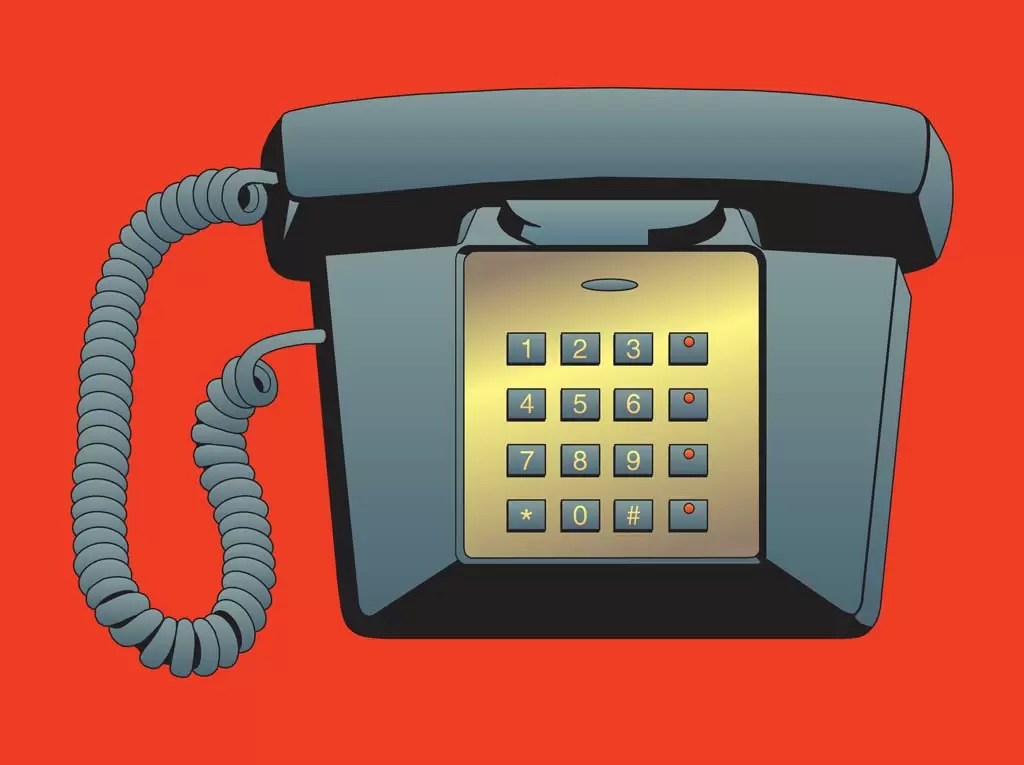In the world of telecommunications, seamless connectivity is essential. Achieving a reliable connection is paramount, and mastering the intricacies of this crucial task leads to ensuring a clear and uninterrupted flow of communication.
Since clear and reliable communication is at the heart of the connected world, ensuring the phone socket is wired correctly should be the top priority. This article will enlighten you through the crucial procedures and telephone socket connection method needed to guarantee that your Clipsal phone socket is painstakingly wired, permitting clear and dependable conversations.
Table of Contents
What Is The Telephone Socket Connection Method
The telephone socket connection method is a series of steps used to properly connect a telephone socket, also known as a phone jack or wall outlet, to your telecommunications network. This method allows for the establishment of clear and reliable telephone communication within your home or office. Here is a brief overview of the telephone socket connection method:
Components of a Telephone Socket
Before exploring into the connection method, it is important to understand the key components of a typical telephone socket:
- Socket Housing
The outer part of the socket, usually mounted on the wall or junction box. It houses the internal components and wires.
- Terminal Block
Inside the socket housing is a terminal block with metal connectors or terminals. These terminals are where the wires from the telephone cable will be connected.
- Faceplate
The front cover of the socket, which can often be removed for access to the terminal block.
- Screws
These are used to secure the wires to the terminal block.
Steps for the Telephone Socket Connection Method
Here are the steps to properly connect a telephone socket:
- Safety Precautions
Always begin by making sure the electricity has been switched off in the space where the plug will be installed. Your primary goal while working with electrical components should be safety.
- Wire Identification
Most telephone cables consist of four color-coded wires: red, green, yellow, and black. You will need to identify and work with these wires during the installation.
- Wire Stripping
Use a wire stripper or cutter to carefully strip the outer insulation from the telephone cable, exposing the individual wires. Be cautious not to damage the wires during this process.
- Faceplate Removal
If your telephone socket has a removable faceplate, gently remove it to access the terminal block.
- Wire Connection
Attach the exposed wires to the corresponding terminals on the terminal block, typically following standard color coding:
- Red wire to the “R” or “Red” terminal.
- Green wire to the “G” or “Green” terminal.
- Yellow wire to the “Y” or “Yellow” terminal.
- Black wire to the “B” or “Black” terminal.
- Secure Wiring
The terminal screws should be securely tightened using a screwdriver. The wires must be securely fastened to provide excellent electrical contact and to avoid loose connections that can cause signal problems.
- Double-Check Connections
Make sure there are no exposed conductors or loose wires and that each wire is attached to the proper terminal.
- Socket Testing
Plug a telephone or a telephone tester into the socket to check for a dial tone. A clear dial tone indicates that the connection is secure and correctly wired.
- Faceplate Replacement
If you removed the faceplate earlier, reattach it to cover the terminal block.
- Socket Mounting
Securely attach the telephone socket to the wall or junction box using screws or wall anchors to ensure it remains in place.
- Label and Document
Label each for easy identification if you have multiple phone sockets in your space. Maintain a record of which socket corresponds to which room or location.
- Final Testing
Conduct a final test by making a phone call to ensure clear and reliable communication. Listen for any static, interference, or dropped calls. If any issues arise, revisit the connections and wiring for troubleshooting and correction.
Tools and Materials on How to Properly Wire a Clipsal Phone Socket
When it comes to properly wiring a Clipsal phone socket, having the right tools and materials at your disposal is not just helpful but absolutely essential in order to install successfully and safely. The following are the necessary equipment and tools for the job:
Screwdrivers
Phillips and Flathead Screwdrivers: You’ll need both types of screwdrivers to secure the wires to the terminals on the phone socket. Phillips screwdrivers are commonly used for most terminal screws, while flathead screwdrivers can be useful for certain models.
Wire Stripper/Cutter
A wire stripper/cutter is crucial for precisely stripping the outer insulation from the telephone cable to expose the individual wires. This tool allows you to work efficiently and avoid damaging the wires during stripping.
Telephone Cable
You will need a suitable length of telephone cable with at least four color-coded wires, which typically include red, green, yellow, and black. The quality of your cables can affect the signal quality, so ensure you use a reputable brand.
Safety Gear (Optional but Recommended)
While not always necessary, safety gear can provide extra protection. Consider wearing safety glasses to shield your eyes from debris or wire fragments that may fly during the installation. Gloves can protect your hands, especially when handling sharp tools or exposed wires.
Additional Materials (May Be Required)
You could need extra materials, including wall anchors, screws, or wall plates, depending on your particular installation demands. These components aid in anchoring the phone socket firmly to the wall or junction box.
Power Drill and Anchors (if necessary)
If you are mounting the phone socket to a wall, you may need a power drill and suitable wall anchors to attach the socket securely. Ensure you have the appropriate tools and anchors for the wall type (e.g., drywall, concrete, wood).
Importance Of Testing The Phone Socket And Troubleshooting Tips
Testing and troubleshooting are critical aspects of the telephone socket connection method. Properly assessing your installation and addressing any possible connectivity issues are essential for ensuring reliable telecommunications. Here is an explanation of the importance of testing and some troubleshooting tips:
- Importance of Testing
Verification of Correct Wiring: Testing allows you to confirm that the phone socket is correctly wired. This step ensures that each wire is connected to the right terminal and that there are no loose or exposed conductors, which could lead to signal problems.
- Signal Quality Check
Testing helps you assess the quality of the telephone signal. It allows you to check for clear dial tones, the absence of static or interference, and the ability to make and receive calls without issues.
- Safety Assurance
Testing ensures that the installation is safe. Faulty wiring or loose connections can pose electrical hazards, and testing helps identify and rectify such risks.
Troubleshooting Tips:
- No Dial Tone
- Recheck the wiring connections if you do not hear a dial tone when testing the phone socket. Make sure each wire is securely fastened to the correct terminal.
- Ensure that the telephone cable is undamaged and properly seated in the socket. Replace the cable if it is faulty.
- Static or Interference
- If you hear static or interference during calls, this could be caused by faulty wiring, loose connections, or electrical interference.
- Check for loose wires, especially if they are not properly secured to the terminal screws.
- Verify that the phone socket is installed away from sources of electrical interference, such as power outlets or electronic devices.
- One-Way Audio or Echo
- One-way audio or echo during calls could be a sign of a signal imbalance or wiring problems. Make sure that the wiring is properly connected and that no wires are touching or crossing one another. As damaged cables can result in signal imbalances, look for them.
- Inability to Make or Receive Calls
- If you can’t make or receive calls, it may be due to wiring errors or problems with the telephone service provider.
- Double-check the wiring connections to confirm they are correct.
- Contact your service provider to rule out any issues with your telephone line.
- Safety Considerations
- Always prioritize safety. If you suspect any electrical hazards during testing or troubleshooting, immediately disconnect the power and seek professional assistance.
- Documentation and Records
- Keep records of your installation, including the wiring connections and any changes made during troubleshooting. This documentation can be valuable if issues arise in the future.
Mastering the Art of Telecom Troubleshooting with Schneider Electric Thailand
Clear and reliable communication lies at the heart of our interconnected world. Ensuring that your phone socket is meticulously wired should be a top priority. In this ever-connected world, the knowledge for maintaining a clear and reliable flow of communication in both residential and professional settings is invaluable. Remember to prioritize safety and document your installation for future reference, enhancing your telecom troubleshooting expertise.
If you ever need additional assistance with telecom troubleshooting or have further questions about telecommunications solutions, you may visit Schneider Electric Thailand at https://www.se.com/th/th/. Whether seeking guidance on telecom troubleshooting, looking for the latest technology trends, or interested in sustainable and efficient solutions, Schneider Electric Thailand can be a valuable resource for your telecommunications endeavors.











